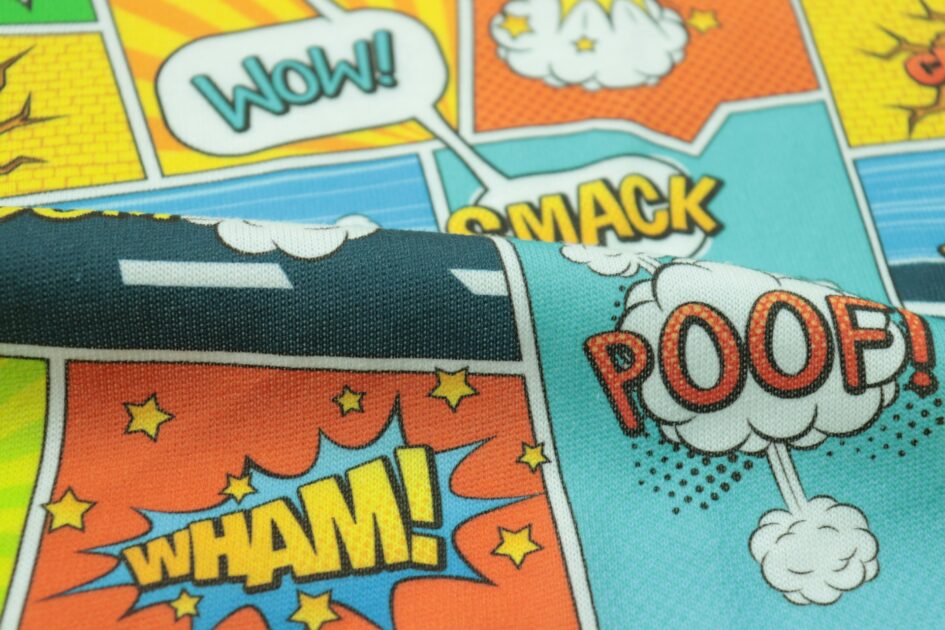Your goal for this challenge is to individually create an educational comic: an original, 12 – 20 panel comic to teach the reader about some idea or concept through the use of text and image. The subject of the comic can be about anything you want so long as it is educational. Utilize the template here to document all your work
As you complete this project, you will be able to:
- Utilize text and imagery in a complimentary manner
- Evaluate educational comics and make suggestions for improvement
- Iterate on your project with peer feedback to refine and improve your work.
- Engage in design thinking to create multimedia learning projects
- Apply storytelling principles in creating effective learning opportunities
Important Dates
| Fri, Sep 12 | Substantive Contribution to the sharing and helping discussion |
| Up to Thurs, Sep 25 | Participation in the sharing and helping discussion |
| Wed, Sep 17 | Share your prototype |
| Sun, Sep 21 | Provide peer feedback |
| Thurs, Sep 25 | Project submission |
Sharing and helping discussion (5%)
As you work through your project and engage with resources, you will learn a lot that is worth sharing with others.
You are to create a substantive contribution (~250 words) that outlines your discoveries. This can include insights from the readings, other resources, apps, tutorials, or tools. Be sure to explain why what you are sharing is relevant to the project. Please format your contribution as a blog post or document and share it in our Mattermost Sharing and Helping channel.
Participation beyond your substantive post is important, so please engage with others by asking questions, offering help, and responding to posts.
Sharing your prototype
Your prototype is the first draft of your final project. You can share it as a web page, a document with clear project documentation, or a blog post.
The prototype can be a rough sketch of your comic—it doesn’t have to be perfect—or a detailed text description of the words and images. The key is to clearly get your point across.
Along with your prototype, please include your “Understand” and “Plan” phases. These don’t need to be perfect or complete; you’ll have a chance to refine them later. Please utilize this template.
Once you have everything ready, share your prototype with your peers in the Mattermost chat.
Providing Peer Review (5%)
You will be assigned two of your peers prototypes to provide feedback to (~200 words each). The instructor will setup a private channel so only the reviewer, reviewee, and instructor can see the feedback. One of the best ways we can grow individually and as a team is through the process of feedback. Both offering and receiving peer feedback can be hard, scary, and emotional – please consider your words carefully for constructive and actionable comments. Please reach out to your instructor at anytime for any kind of support.
UCD Teaching & Learning. (2024, April 10). How to give constructive and actionable peer feedback: Students to Students [Video]. YouTube. https://www.youtube.com/watch?v=GP1ww_1AJzI
Some prompts for feedback:
Positive Remarks
- I enjoyed ______ because ______
- Excellent job on ______
- Your work displayed ______
Improvement Ideas
- I was wondering if ______
- I am confused by ______
- One suggestion would be ______
Questions
- What is ______
- Why are ______
- What are ______
Project submission (20%)
This is the final project submission that includes your entire design process from understanding the challenge through planning, peer feedback, and revision. Please share your final project
The components of the final project submission include:
- Understand (Discover, Interpret, Specify) (5%)
- Define the challenge, context, audience, and learning outcomes
- Plan (Ideate, Sketch, Elaborate) (5%)
- Develop a solution plan, including a hand-drawn storyboard, script and connections to multimedia theory
- Reflect and Refine from Prototype Feedback (5%)
- Critical reflection on the peer feedback and the design process as a whole
- Project Artifact (5%)
- Create a multimedia artifact prototype based on the plan
The process you follow to create your project is where most of your learning occurs, and as a result, the vast majority of your grade will be based on that process. So it is crucial that you record all of your design decisions. The key to success is to work through a clear design process and to justify your choices by referencing class readings and other literature.
Here is a template for you to document your work. This template is designed to guide your team through the design and creation of your project and includes the expected phases listed above.
Examples: Please view past examples here (shared in the course Brightspace shell for privacy reasons).
Resources
You can use any tool or method to create your comic. It can be hand drawn or it can be done digitally. (It does not matter if the program you use has a watermark). If you are creating your comic digitally, you can use any graphics program and know there are comic specific programs available such as Comic Life 3. There are many how-to videos online to support you in making. Please be aware of any privacy concerns when using software and services, see here for more info: FIPPA, Privacy, and Consent Resources.
When using images in your comments, ensure you are meeting copyright.
Why Comics?
Learn more:
Tribull, C. M. (2017). Sequential Science: A guide to communication through comics. Annals of the Entomological Society of America, 110(5), 457–466. https://doi.org/10.1093/aesa/sax046
Morrison, T. G., Bryan, G., & Chilcoat, G. W. (2002). Using student-generated comic books in the classroom. Journal of Adolescent & Adult Literacy, 45(8), 758–767. https://www.jstor.org/stable/40012828
Assessment Rubric
| 0 – 2 (Needs Additional Work) | 3 (Marginally Meets Expectations) | 4 (Fully Meets Expectations) | 5 (Exceeds Expectations) | |
| Sharing and helping (5%) | Substantive contribution is missing or lacks substance. There’s little if any engagement in the discussion. | Contributions are brief and/or inadequately supported by literature or other sources Participation is inconsistent. | The contribution is substantive and relevant to the project. Is an active, consistent contributor to the conversation. | Exceptional substantive contribution that demonstrates sound theory and shows external research. Is an active contributor in the discussion that elevates the conversation. |
| Peer Review (5%) | Feedback is minimal, generic, or unhelpful. Lack of understanding of the project’s goals. It is delivered in an emotionally harmful manner. | Feedback lacks depth, is brief, and/or is unactionable. There is insufficient understanding of the project. | Feedback is thoughtful, specific, and actionable. The tone is positive, constructive, and respectful. | Feedback is exceptionally insightful, comprehensive, and emotionally intelligent. There is a deep analysis of the project and connection to theory. |
| Understand (5%) | Poorly defined challenge Insufficient audience description Off-target POV statement Learning outcomes inadequately described Lack of effort is apparent | Challenge is overly simple, unmanageable, or partially defined Audience description is limited POV statement is marginally effective Learning outcomes need refinement | Clear, manageable learning challenge with well-elaborated context. Audience and needs are effectively described. POV statement is clear and effective. Learning objectives and sub-objectives are well-defined. Thoughtful effort evident. | Exceptional focus and context, with an outstanding description of audience needs, goals, skills, and resources. POV statement is highly insightful. Learning outcomes are professional and comprehensive. Clear, thoughtful communication and exceptional effort. |
| Plan (5%) | Inadequate storyboard/script Few or no connections to multimedia principles Effort is insufficient | Adequate but unrefined storyboard/script Storyboard seems to have been created to match the prototype (instead of the other way) Limited connections to multimedia principles Plan lacks clarity or originality | Relevant and focused topic with a good solution plan. Clearly engaged in a design process with ideation and refinement. Storyboard/script is functional and clear, with authentic hand-drawn graphics and text. Effectively connects to multimedia principles. | Exceptionally focused and relevant topic with a clear, detailed plan. Engaged in an exceptional process of design with iteration evident. Outstanding storyboard/script with strong hand-drawn graphics and text, and notes for implementation. Extensive application of multimedia, design, and user-experience principles. |
| Reflect and Refine (5%) | Minimal or defensive response to feedback. Few substantive revisions. Limited individual reflections. | Limited reflection on feedback or incomplete revisions. Individual reflections are brief or lack depth. | Thoughtful and complete reflection on feedback. Effective revisions descriptions addressing major concerns. Individual reflections are clear and collaborative. | Exceptional reflection on feedback and thoughtful explanations of revisions to the prototype. Insights into strengths, limitations, and potential improvements are outstanding. Individual reflections are constructive and thorough. |
| Project Artifact (5%) | Significant deviations from the plan Poor application of multimedia principles Limited tool mastery or poor user experience | Limited use of multimedia principles Marginal evidence of effort, tool mastery, or user experience Weak initial prototype or late submission Limited refinement after feedback | Faithful to the plan and effectively addresses the challenge. Good application of multimedia principles. Competent tool mastery and positive user experience. Some refinement made after feedback. | Excellent alignment with the plan, fully addressing the challenge. Exceptional application of multimedia, design, and user-experience principles. Mastery of the chosen tool and an outstanding user experience. Solid revisions made after feedback on initial prototype. |







